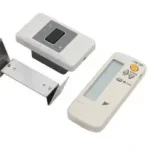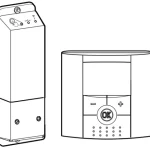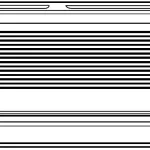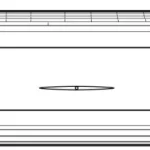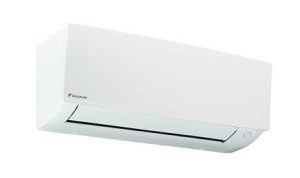

FTXC20CV1B Room Air Conditioner
User Manual
DAIKIN ROOM AIR CONDITIONER
OPERATION MANUAL
R32 SPLIT SERIES
MODELS
FTXC20CV1B
FTXC25CV1B
FTXC35CV1B
FTXC50CV1B
FTXC60CV1B
FTXC71CV1B
Note:
Illustrations in this manual are for explanation to the user only and may differ from the actual machine. These are subject to change without prior notice for the development of future products.
Safety precautions
![]() Read the precautions in this manual carefully before operating the unit.
Read the precautions in this manual carefully before operating the unit.
 This appliance is filled with R32.
This appliance is filled with R32.
- After reading, keep this manual in a convenient place so that you can refer to it whenever necessary. If the equipment is transferred to a new user, be sure also to hand over the manual.
- Keep this manual where the operator can easily fi nd them.
- Read all safety precautions in this manual carefully before operating the unit.
- For safety reasons, the operator must read the following cautions carefully.
- The precautions described herein are classifi ed as WARNING and CAUTION. They both contain important information regarding safety. Be sure to observe all precautions without fail.
 Never attempt.
Never attempt.
![]() Never wet the air conditioner or the remote controller with water.
Never wet the air conditioner or the remote controller with water.
 Be sure to follow the instructions.
Be sure to follow the instructions.
![]() Never touch the air conditioner or the remote controller with wet hands.
Never touch the air conditioner or the remote controller with wet hands.
![]() Be sure to establish an earth connection.
Be sure to establish an earth connection.
WARNING
- The appliance must be stored in a room without continuously operating ignition sources (for example open flames, an operating gas appliance or an operating electric heater).
- Do not pierce or burn.
- Be aware that refrigerants may not contain an odor.
- In order to avoid fi re, explosion or injury, do not operate the unit when harmful, among which flammable or corrosive gases, are detected near the unit
 .
. - It is not good for your health to expose your body to the air fl ow for a long time.
- Do not place objects, including rods, your fi gears, etc., in the air inlet or outlet. Product malfunctioning, product or injury damage may result due to contact with the air conditioner’s high-speed fan blades.
- Do not attempt to repair, dismantle reinstall or modify the air conditioner yourself as this may result in water leakage, electric shocks, or fire hazards.
- Do not attempt to install or repair the air conditioner yourself. Improper workmanship may result in water leakage, electric shocks, or fi re hazards. Please contact your local dealer or qualifi ed personnel for installation and maintenance work.
- Do not use the flammable spray near the air conditioner, or otherwise fi re may result.
- Do not place flammable items, such as spray cans, within 1 meter of the air outlet.
- The spray cans may explode as a result of hot air from the indoor or outdoor units.
- When the air conditioner is malfunctioning (giving off a burning odor, etc.) turn off power to the unit and contact your local dealer. Continued operation under such circumstances may result in a failure, electric shocks, or fire hazards.
- Do not use a refrigerant other than the one indicated on the outdoor unit (R32) when installing, moving or repairing. Using another refrigerant may cause trouble or damage to the unit and personal injury.
- The refrigerant used in the air conditioner is safe. Although leaks should not occur, if for some reason any refrigerant happens to leak into the room, make sure it does not come in contact with any flame as of gas heaters, kerosene heaters, or gas range.

- If the air conditioner is not cooling properly, the refrigerant may be leaking, so call your dealer.
- When carrying out repairs accompanying adding refrigerant, check the content of the repairs with our service staff.
- Do not wash the air conditioner with water, as this may result in electric shocks or fire.
- Be sure to install an earth leakage breaker. Failure to install an earth leakage breaker may result in electric shocks or fi re.
- Only connect the air conditioner to the specifi ed power supply circuit. Power suppliers other than the one specifi ed may result in electric shocks, overheating and fires.
- Be sure to earth the unit. Do not earth the unit to a utility pipe, lightning conductor, or telephone earth lead. Imperfect earthing may result in electric shocks.

![]() CAUTION
CAUTION
- Be aware that prolonged, direct exposure to cool or warm air from the air conditioner, or to air that is too cool or too warm can be harmful to your physical condition and health.
- Do not use the air conditioner for purposes other than those for which it is intended. Do not use the air conditioner for cooling precision instruments, food, plants, animals, or works of art as this may adversely affect the performance, quality, and/or longevity of the object concerned.

- Do not expose plants or animals directly to airfl ow from the unit as this may cause adverse effects.
- Do not place appliances that produce naked flames in places exposed to the air fl ow from the unit as this may impair the combustion of the burner.
- Do not block air inlets or outlets. Impaired air fl ow may result in insuffi client performance or trouble.
- Beware of fi re in case of refrigerant leakage. If the air conditioner is not operating correctly, i.e. not generating cool or warm air, refrigerant leakage could be the cause. Consult your dealer for assistance. The refrigerant within the air conditioner is safe and normally does not leak. However, in the event of a leakage, contact with a naked burner, heater, or cooker may result in the generation of noxious gas.
- Do no longer use air conditioner until a qualifi ed service person confirms that the leakage has been repaired.
- Do not sit or place objects on the outdoor unit. Falling yourself or falling objects could cause injury.
- Do not place objects that are susceptible to moisture directly beneath the indoor or outdoor units. Under certain conditions, condensation on the main unit or refrigerant pipes, air filter dirt or drain blockage may cause dripping, resulting in fouling or failure of the object concerned.
- After prolonged use, check the unit stand and its mounts for damage. If left in a damaged condition, the unit may fall and cause injury.
- To avoid injury, do not touch the air inlet or aluminum fi ns of the indoor or outdoor units.
- The appliance is not intended for use by unattended young children or infi rm persons. Impairment of bodily functions and harm to health may result.
- Children should be supervised to ensure that they do not play with the unit or its remote controller. Accidental operation by a child may result in impairment of bodily functions and harm to health.
- Do not sit on the outdoor unit. Put things on the unit, or pull the unit. Doing so may cause accidents, such as falling or toppling down, thus resulting in injury, product malfunctioning, or product damage.
- Do not give impact to the indoor and outdoor units, or otherwise, product damage may result.
- Do not place objects around the indoor unit. Doing so may have an adverse infl uence on the performance, product quality, and life of the air conditioner.
- Be careful not to let pets urinate on the air conditioner. Urination on the air conditioner may result in electric shocks or fire.
- Do not sit or hang on the up and down panel. The up and down panel may fall, and injury or product malfunctioning may result.
- Do not sway the up and down panel. The up and down panel may hit people or objects, and injury or property damage may result.
- Do not let children play around the up and down panel. Injury or property damage may result.
- Do not pull the wires. The wires may be broken and the up and down panel may fall, and injury or property damage may result.
- Do not locate obstacles in the up and down route. The up and down panel may fall, and injury or property damage may result.
- Do not bend or damage the wires. The wires may be broken and the up and down panel may fall, and injury or property damage may result.
- Do not put objects on the up and down panel, or otherwise, production malfunctioning may result.
- Do not use an unstable stand at the time of operating or maintaining the air conditioner, or otherwise, you may topple over or injure yourself.
- Locate the remote controller in places out of reach of children. The wrong operation of the remote controller may result in injury.
- To avoid oxygen depletion, ensure that the room is adequately ventilated if equipment such as a burner is used together with the air conditioner.

- Before cleaning, be sure to stop unit operation, turn the breaker off or remove the power cord.
- Otherwise, an electric shock and injury may result.
- Do not connect the air conditioner to a power supply different from the one as specifi ed. It may cause trouble or fi re.
- Depending on the environment, an earth leakage breaker must be installed. The lack of an earth leakage breaker may result in electric shocks.
- Arrange the drain hose to ensure smooth drainage. Incomplete draining may cause wetting of the building, furniture, etc.
- Do not place objects in direct proximity of the outdoor unit and do not let leaves and other debris accumulate around the unit. Leaves are a hotbed for small animals which can enter the unit. Once in the unit, such animals can cause malfunctions, smoke or fi re when making contact with electrical parts.
- To avoid electric shocks, do not operate with wet hands.

- Do not wash the indoor unit with excessive water, only use a slightly wet cloth.

- Do not place things such as vessels containing water or anything else on top of the unit. Water may penetrate into the unit and degrade electrical insulations, resulting in an electric shock.
Installation site.
To install the air conditioner in the following types of environments, consult the dealer.
- Places with an oily ambient or where steam or soot occurs.
- Salty environment such as coastal areas.
- Places where sulfide gas occurs such as hot springs.
- Places where snow may block the outdoor unit.
- The indoor unit is at least 1m away from any television or radio set (the unit may cause interference with the picture or sound).
- The drain from the outdoor unit must be discharged to a place of good drainage.
Consider nuisance to your neighbors from noises.
Also, pay attention to operating noise.
- Select the following kinds of locations:
A. A place that can suffi ciently withstand the weight of the air conditioner with less running noises and vibrations.
B. A place where warm airfl ow from the air outlet of the outdoor unit and operating noise do not cause a nuisance to neighbors. - Be sure there are no obstructions near the air outlet of the outdoor unit.
- Obstructions may result in poor performance and increased operating noise. If abnormal noise occurs, ask your dealer for advice.
Electrical work.
- For power supply, be sure to use a separate power circuit dedicated to the air conditioner.
System relocation.
- Consult your Daikin dealer about remodeling and relocation.
REMOTE CONTROLLER OVERVIEW
Preparation Before Operation
Accessories
The following accessories are included.
| Drywall screw | Battery | Remote Controller Holder |
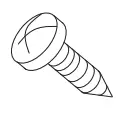 |
 |
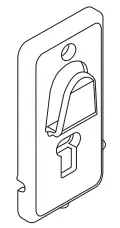 |
| 2 | 2 | 1 |
To set the batteries
- Remove the back cover by sliding downwards.
- Insert two dry batteries (LR03:AAA).
- Replace the back cover.

Disposal Requirements
![]() The batteries supplied with the controller are marked with this symbol.
The batteries supplied with the controller are marked with this symbol.
This means that the batteries shall not be mixed with unsorted household waste.
If a chemical symbol is printed beneath the symbol, this chemical symbol means that the battery contains a heavy metal above a certain concentration.
Possible chemical symbols are:
Pb: lead (>0,004%)
Waste batteries must be treated at a specialized treatment facility for re-use. By ensuring correct disposal, you will help to prevent potential negative consequences for the environment and human health. Please contact your local authority for more information.
About batteries
- Remove the batteries from the remote controller if the air conditioner will not be used for an extended period of time.
- When replacing the batteries, it is advised to replace both batteries together with batteries of the same type.
- Batteries should be replaced once a year. However, if the display of the remote controller started to fade or there is a noticeable degradation in performance, replace both batteries with new AAA: LR03 batteries.
- The attached batteries are provided for the initial use of the air conditioner. The usage period of these batteries depends on the manufactured date of the air conditioner.
Preparation Before Operation
To operate the remote controller
- Aim the transmitter of the remote controller at the receiver of the indoor unit.
- Ensure there is no blockage such as a curtain between the indoor unit and the remote controller, signal transmission will be unsuccessful.

To fix the remote controller holder on the wall
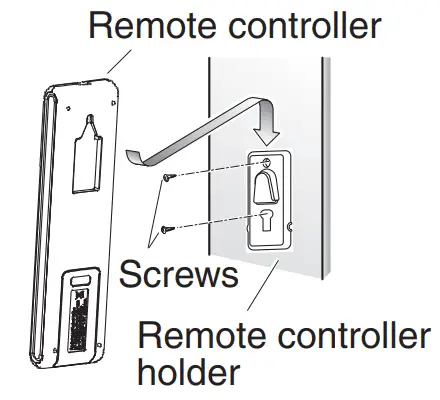
- Choose a location where the signal is able to reach the unit.
- Fix the holder onto a wall, a pillar or etc with the screws supplied with the holder.
- Place the remote controller on the holder.
About remote controller
- Do not drop nor wet the remote controller.
- Never expose the remote controller under direct sunlight.
- Dust on the transmitter lens cover will reduce the sensitivity.
- Signal communication may be affected if the air conditioner is being installed near an electronicstarter-type fluorescent lamp (such as an inverter-type lamp) in the room.
To set the clock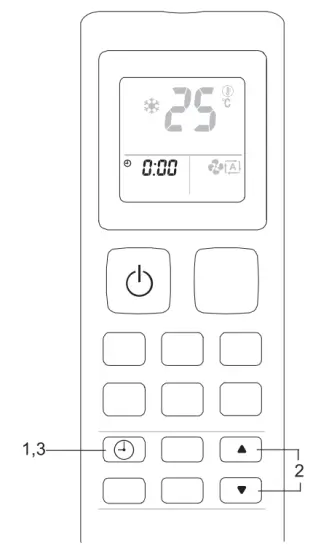 1. Press
1. Press ![]() the button.
the button.
• blinks on the LCD.
2. Press ![]() or
or ![]() set the clock to the present time.
set the clock to the present time.
• Holding down or button rapidly increases or decreases the displayed time.
3. Press ![]() the button.
the button.
- Point the remote controller at the indoor unit when pressing the buttons.
- ” ” blinks.

 stop blinking, the present time will be displayed.
stop blinking, the present time will be displayed.
 For example, the present time is 8 o’clock in the morning, will be displayed.
For example, the present time is 8 o’clock in the morning, will be displayed.
Note
The remote controller is automatically in clock setting mode upon battery insertion. Users are advised to complete the clock setting before operation.
COOL FAN DRY HEAT AUTO Operation
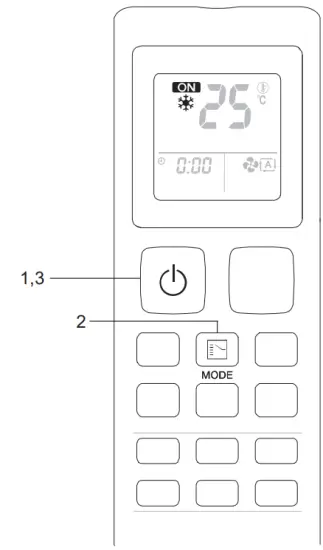
1. Press ![]() the button to start the unit operation.
the button to start the unit operation.
• “is displayed on the LCD.
2. Press![]() the button to choose the desired operation mode.
the button to choose the desired operation mode.
• Each pressing on the button advances the available operating mode in the sequence below:![]()
To stop operation
3. Press ![]() the button again to stop the unit operation.
the button again to stop the unit operation.
Note
| Operating Mode | Description |
| COOL | The air conditioner cools down the room by releasing the heat to the outdoor unit. |
| FAN | The air conditioner indoor unit FAN will run in fan-only. |
| DRY | The air conditioner operates to control the room humidity by regulating the indoor unit fan speed. Therefore, manual adjustment of the fan speed in DRY mode is not available. |
| HEAT | The air conditioner heats up a room to the temperature setpoint. |
| AUTO | The air conditioner cools down or heats up a room to the temperature setpoint. It automatically switches between cooling and heating if necessary. |
Notes on the operating conditions
- The air conditioner will always consume a small amount of electricity even in standby mode.
- Ensure that the power supply/breaker is switched off if the air conditioner is not going to be used for an extended period of time.
To change the temperature setting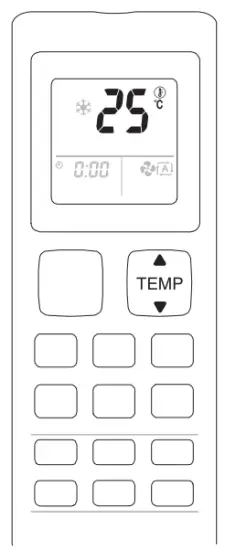 4. Press
4. Press the button.
the button.
• Press to raise the temperature and lower the temperature.
| Operating Mode | COOL | HEAT | AUTO | DRY & FAN |
| Set Temperature Range | 18°C -32°C | 10°C -30°C | 18°C -30°C | Not applicable |
- Press
 and
and  simultaneously for 5 seconds to change the temperature display unit to Celcius (°C) or Fahrenheit (°F).
simultaneously for 5 seconds to change the temperature display unit to Celcius (°C) or Fahrenheit (°F). - For example,

Tips for energy saving
- Keeps the temperature setting at a moderate level (do not over-cool the room).
- Clean the air filters to prevent clogging which could contribute to ineffi client operation and energy wastage.
** Recommended to clean the filter once every 2 weeks for regular users.
To change the fan speed setting
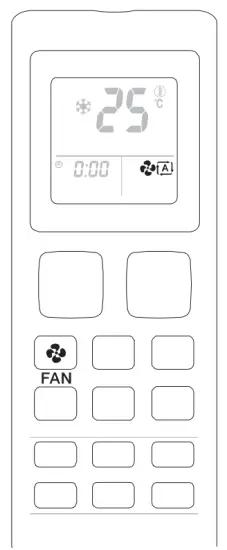 5. Press
5. Press ![]() the button.
the button.
- Each pressing on the button advances the fan speed mode in sequence.
- In COOL, FAN, HEAT & AUTO mode:
 Fan speed setting is not available in DRY mode.
Fan speed setting is not available in DRY mode.
Notes on fan speed setting
• Cooling and heating effect will be affected at lower air fl ow rate
Adjusting the Airfl ow Direction
To change the air flow direction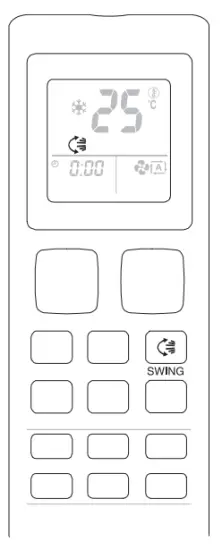 1. Press
1. Press ![]() the button.
the button.
•![]() is displayed on the LCD.
is displayed on the LCD.
To set the flap at the desired position
1. Press![]() the button when the flap reached the desired position.
the button when the flap reached the desired position.
Notes
- Always use the remote controller to adjust the swing angle. Any manual adjustment may break the mechanism of the swing control.
- The cooling and heating effects at different step angles will be affected by different air flow rates.
ECONO Operation
To start the ECONO operation
1. Press ![]() the button.
the button.
•![]() is displayed on the LCD.
is displayed on the LCD.
To cancel the ECONO operation
2. Press![]() the button.
the button.
• ![]() will disappear from the LCD.
will disappear from the LCD.
Notes on ECONO operation
- This function enables effi client operation by limiting the maximum power consumption of the air conditioner unit.
- Pressing
 causes the setting to be canceled and
causes the setting to be canceled and disappears from the LCD.
disappears from the LCD. - If the power consumption level is already low, switching to ECONO operation will not reduce the power consumption.
- ECONO operation will be stopped if the POWERFUL operation is activated.
- ECONO is only available in COOL, DRY, HEAT & AUTO modes.
SLEEP Operation
To start the SLEEP operation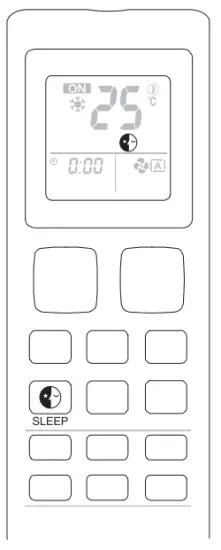
- Press
 the button.
the button.
• is displayed on the LCD.
• LED Indication lights of the unit will be dimmed down.
To cancel the SLEEP operation - Press
 the button.
the button.
• will disappear from the LCD.
Notes on SLEEP operation
- Pressing
 causes the setting to be canceled and
causes the setting to be canceled and disappears from the LCD.
disappears from the LCD. - This operation automatically adjusts the set temperature of the air conditioner to provide a comfortable sleeping environment.
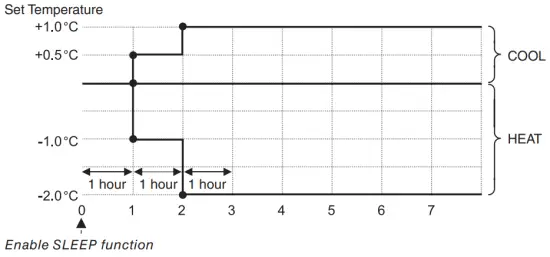
SLEEP is only available in COOL and HEAT mode.
To use OFF TIMER operation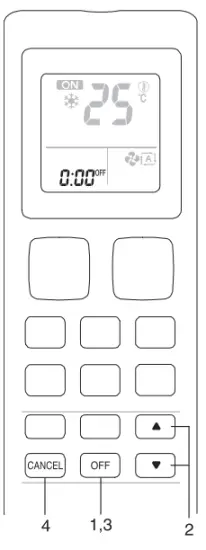 • Ensure the clock setting is set to present time (refer to method to set the clock under preparation before operation).
• Ensure the clock setting is set to present time (refer to method to set the clock under preparation before operation).
- Press OFF the button.
• OFF will be displayed on the LCD and blinks.
OFF will be displayed on the LCD and blinks. - Press to set the off-timer setting.
• Holding down or button rapidly increases or decreases the time display. - Press OFF the button again.
• OFF stops blinking, and the OFF TIMER set will be displayed.
OFF stops blinking, and the OFF TIMER set will be displayed.
To cancel OFF TIMER operation - Press the Cancel button to cancel the OFF TIMER.
To use ON TIMER operation
• Ensure the clock setting is set to present time (refer to method to set the clock under preparation before operation).
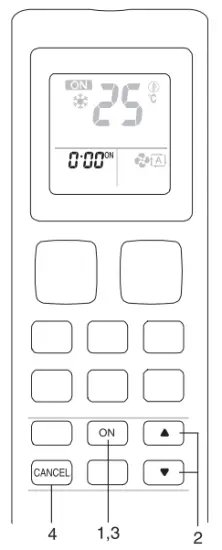
- Press ON the button.
• ON will be displayed on the LCD and blinks.
ON will be displayed on the LCD and blinks. - Press to set the on-timer setting.
• Holding down or button rapidly increases or decreases the time display. - Press ON the button again
• ON stop blinking, and the ON TIMER set will be displayed.
ON stop blinking, and the ON TIMER set will be displayed.
To cancel ON TIMER operation - Press the Cancel button to cancel the ON TIMER.
Notes on TIMER setting
- When TIMER is set, the present time is not displayed.
- In the following cases, set the timer again.
– After the circuit breaker has turned off.
– After a power failure.
– After replacing the batteries in the remote controller.
To start a POWERFUL operation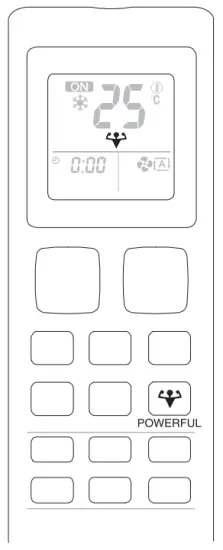
- Press
 the button.
the button.
• will be displayed on the LCD.
will be displayed on the LCD.
• POWERFUL operation ends in 20 minutes. The previous setting used before the POWERFUL operation will be resumed.
To cancel the POWERFUL operation - Press
 the button.
the button.
• will disappear from the LCD. The previous setting used before The POWERFUL operation will be resumed.
will disappear from the LCD. The previous setting used before The POWERFUL operation will be resumed.
Notes on POWERFUL operation
- Pressing causes the setting to be canceled and
 disappears from the LCD.
disappears from the LCD. - In conditions where POWERFUL is started, it will temporarily override the operation of other functions for 20 minutes.
- Indoor unit operating sound will appear to be louder during POWERFUL operation.
- The POWERFUL operation will not increase the capacity of the air conditioner if the air conditioner is already operating in its maximum capacity.
- POWERFUL is available in all operating modes.
Fault Diagnosis
To perform error code diagnosis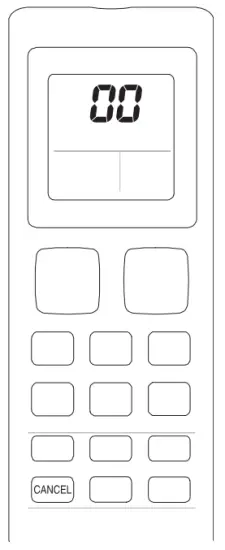
- Press and hold CANCEL the button for 5 seconds.
•blinks. - Press CANCEL to check on the error code.
• Keep pressing on the button until a long “beep” acknowledgment is heard from the indoor unit.
To exit from error code diagnosis - Press and hold CANCEL the button for 5 seconds.
Notes
- A short “beep” and two consecutive “beep” acknowledgment from the indoor unit indicates a non-correspondence error code.
- A long “beep” acknowledgment from the indoor unit indicates a correspondence error code.
- The user shall not attempt to repair or modify the air conditioner as any incorrect work may result in electric shock or fi re.
- Consult the service personnel in case the air conditioner is found to be faulty.
Error code definition
| Error Code | Meaning |
| 0 | Normal |
| Al | Malfunction of indoor unit PCB |
| A3 | Drain level control system abnormal |
| A5 | Antifreeze |
| A6 | Indoor fan motor abnormal |
| AH | Electrical air cleaner abnormal |
| C4 | Indoor heat exchanger (1) thermistor short/open |
| C5 | Indoor heat exchanger (2) thermistor short/open |
| C7 | Louver limits switch error |
| C9 | Indoor room thermistor short/open |
| CC | Malfunction of the humidity sensor system |
| CH | |
| El | Outdoor PCB error |
| E3 | High-pressure protection |
| E5 | Compressor motor lock/compressor overload |
| E6 | Compressor start-up error |
| E7 | Outdoor DC fan motor lock |
| E8 | AC input overcurrent |
| EA | 4-way valve error |
| F3 | Discharge pipe overheat |
| F6 | Abnormal high pressure |
| F8 | |
| FA | Heat exchanger overheat |
| HO | Compressor sensor system error |
| H3 | High-pressure switch error |
| H6 | Compressor feedback detection error |
| H7 | Malfunction of outdoor unit fan motor signal |
| H8 | AC current sensor error |
| H9 | Outdoor air thermistor short/open |
| J3 | Compressor discharge pipe thermistor short/open/misplaced |
| J6 | Outdoor heat exchanger thermistor short/open |
| J8 | Liquid pipe thermistor short/open |
| J9 | Gas pipe thermistor short/open |
| L3 | The outdoor control box overheats |
| L4 | Heat sink overheat |
| L5 | IPM error / IGBT error |
| P4 | Heat sink thermistor short/open |
| UO | Insufficient gas |
| U2 | DC voltage out of range |
| U3 | Transmission error |
| U4 | Communication error |
| UA | Installation error |
| OF | Piping & wiring installation mismatch / wrong wiring / insufficient gas |
| UH | Antifreeze (other rooms) |
Note
• After connecting to a wireless LAN adapter, remote controller settings prevail over WLAN apps settings.
Care and Cleaning
CAUTION
- Before cleaning, be sure to stop the operation and turn off the circuit breaker.
- Do not touch the aluminum fins of the indoor unit. If you touch those parts, this may cause an injury.
- Avoid direct contact with any coil treatment cleaners on the plastic parts. This may cause the plastic part to deform as a result of chemical reactions.
Quick reference
Cleaning parts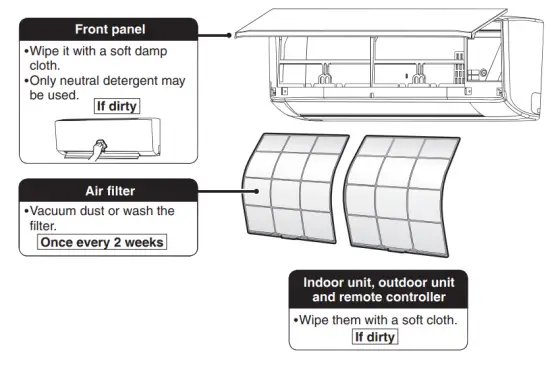
NOTE
For cleaning, do not use any of the following:
- Water hotter than 40°C/104°F
- Volatile liquids such as benzene, gasoline, and thinner
- Polishing compounds
- Rough materials such as a scrubbing brush
Air filter
- Pull out the air filters.
• Open the front panel.
• Push the filter tab at the center of each air filter a little upwards, then pull it down.

- Wash the air filters with water or clean them with a vacuum cleaner.
• It is recommended to clean the air filters every 2 weeks.
If the dust does not come off easily
• Wash the air filters with neutral detergent thinned with lukewarm water, then dry them up in the shade.
• Be sure to remove the titanium apatite deodorizing filter. Refer to “Titanium apatite deodorizing filter”.
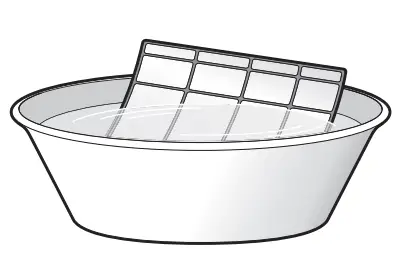
- Set the filters as they were and close the front panel slowly.
• Press the front panel on both sides and the center.
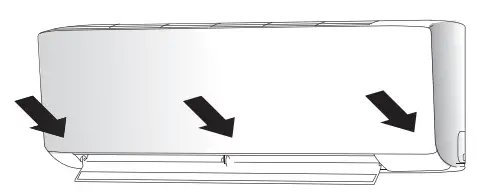
* Appearance of the indoor unit may differ from some models.
CAUTION
• Do not touch the aluminum fi ns by bare hand at the time of dismounting or mounting the filter
Titanium apatite deodorizing filter
The titanium apatite deodorizing filter can be renewed by washing it with water once every 6 months. We recommend replacing it once every 3 years.
1. Take off the titanium apatite deodorizing filter
- Open the front panel and pull out the air filter
- Remove titanium apatite deodorizing filter from the back of the air filter.

2. Clean or replace the titanium apatite deodorizing filter.
[Maintenance]
- Vacuum dust, and soak in lukewarm water or water for about 10 to 15 minutes if dirt is heavy.
- After washing, shake off the remaining water and let them dry in the shade.
[Replacement]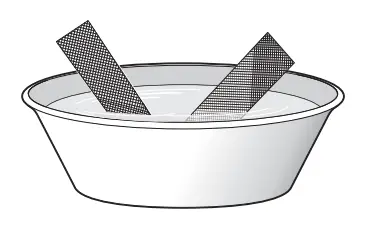
- Remove the filter from the back of the air filter.
- Dispose of the old filter as non-flammable waste.
3. Set the filters as they were and close the front panel.
• Press the front panel at both sides and the center.
 * Appearance of the indoor unit may differ from some models.
* Appearance of the indoor unit may differ from some models.
How to open Front Panel
- Open the front panel.
• Hold the panel at the recesses on the main unit (2 recesses on right and left sides) and lift it until it stops. - Remove the front panel.
• While lifting the front panel further, slide it to the left and pull it to the front side. The left rotating shaft is detached. Slide the right rotating shaft to the right and pull it to the front side to remove it.
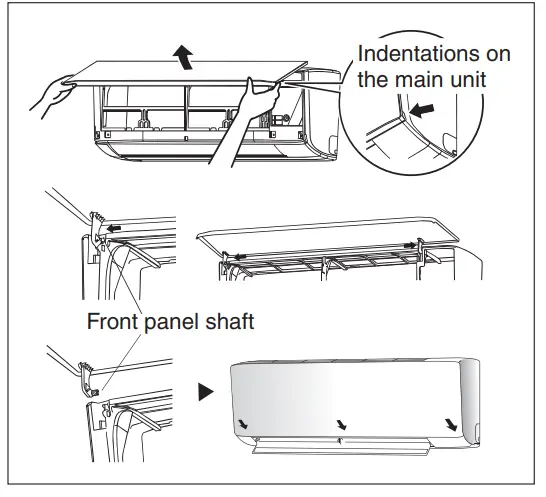
- Attach the front panel.
• Align the right and left rotating shafts of the front panel with the grooves and push them all the way in.
• Gently close the front panel. (Push both ends and the center on the front panel.)
![]() CAUTION
CAUTION
- Don’t touch the metal parts of the indoor unit. It may cause an injury.
- When removing or attaching the front panel, support the panel securely with your hand to prevent it from falling.
- For cleansing, do not use hot water above 40°C, benzine, gasoline, thinner, other volatile oils, polishing compounds, scrubbing brushes, or other hand stuff.
- After cleaning, make sure that the front panel is securely fi xed.
When The Unit Is Not To Be Used For An Extended Long Period Of Time
Operate the unit for 2 hours with the following setting.
Operating mode: cool
Temperature: 30°C/86°F Remove the power plug. If you are using an independent electric circuit for your unit, cut off the circuit. Remove the batteries in the remote control.
Remove the power plug. If you are using an independent electric circuit for your unit, cut off the circuit. Remove the batteries in the remote control.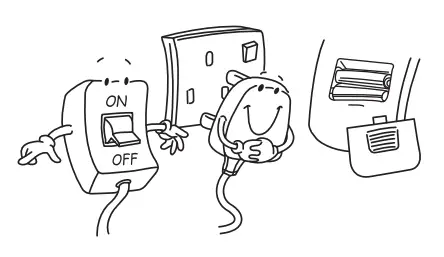
TROUBLESHOOTING
For any inquiries on spare parts, please contact your authorized dealer. If any malfunction of the air conditioner unit is noted, immediately switch off the power supply to the unit. Check the following fault conditions and causes for some simple troubleshooting tips.
| Fault | Causes / Action |
| 1. The compressor does not operate 3 minutes after the air conditioner unit Is started. | —Protection against frequent starting. Wait for 3 to 4 minutes for the compressor to start operating. |
| 2. The air conditioner unit does not operate. | — Power failure or the fuse needs to be replaced. —The power plug is disconnected. — It is possible that your delay timer has been set Incorrectly. — If the fault persists after all these verifications, please contact the air conditioner unit Installer. |
| 3. The airflow is too low. | -The air filter is dirty. —The doors or windows are open. —The air suction and discharge are clogged. —The regulated temperature is not high enough |
| 4. Discharge airflow has a bad odor. | —Odors may be caused by cigarettes, smoke particles, perfume, etc. which might have adhered to the coil. |
| 5. Condensation on the front air grille of the indoor unit. | —This is caused by air humidity after an extended long period of operation. —The set temperature is too low, increase the temperature setting and operate the unit at high fan speed. |
| 6. Water flowing out from the air conditioner unit. | —Switch off the unit and call the dealer. |
If the fault persists, please call your local dealer/serviceman.
- In the event that there is any confl it in the interpretation of this manual and any translation of the same in any language, the English version of this manual shall prevail.
- The manufacturer reserves the right to revise any of the specifi cation and designs contained herein at any time without a prior notifi cation.
DAIKIN EUROPE N.V.
Zandvoordestraat 300, B-8400 Oostende, Belgium
DAIKIN MIDDLE EAST AND AFRICA FZE
P.O.Box 18674, Jebel
All Free Zone, Dubai-UAE
Email: [email protected]
Web: www.daikinmea.com
Importer for Turkey DAIKIN ISITMA ye SOdUTMA SISTEMLERI SAN TIC
A.$. Allianz Plaza-Kucukbakkalkoy Ma h.Kayisdagi Cad.
No:1 34750 Atasehir-ISTANBUL /TURKIYE
DAIKIN INDUSTRIES, LTD.
Head office: Umeda Center Bldg., 2-4-12,
Nakazaki-Nishi, Kita-ku, Osaka, 530-8323 Japan
Tokyo office: JR Shinagawa East Bldg., 2-18-1, Konan,
Minato-ku, Tokyo, 108-0075 Japan
http://www.daikin.com/globaV
DAIKIN MALAYSIA SON. EIND.
Lot 60334, Persiaran Bukit Rahman Putra 3,
Taman Perindustrian Bukit Rahman Putra,
47000 Sungai Rulnh Selangor Darul Ehsan, Malaysia. 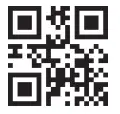 3P621306-1
3P621306-1
